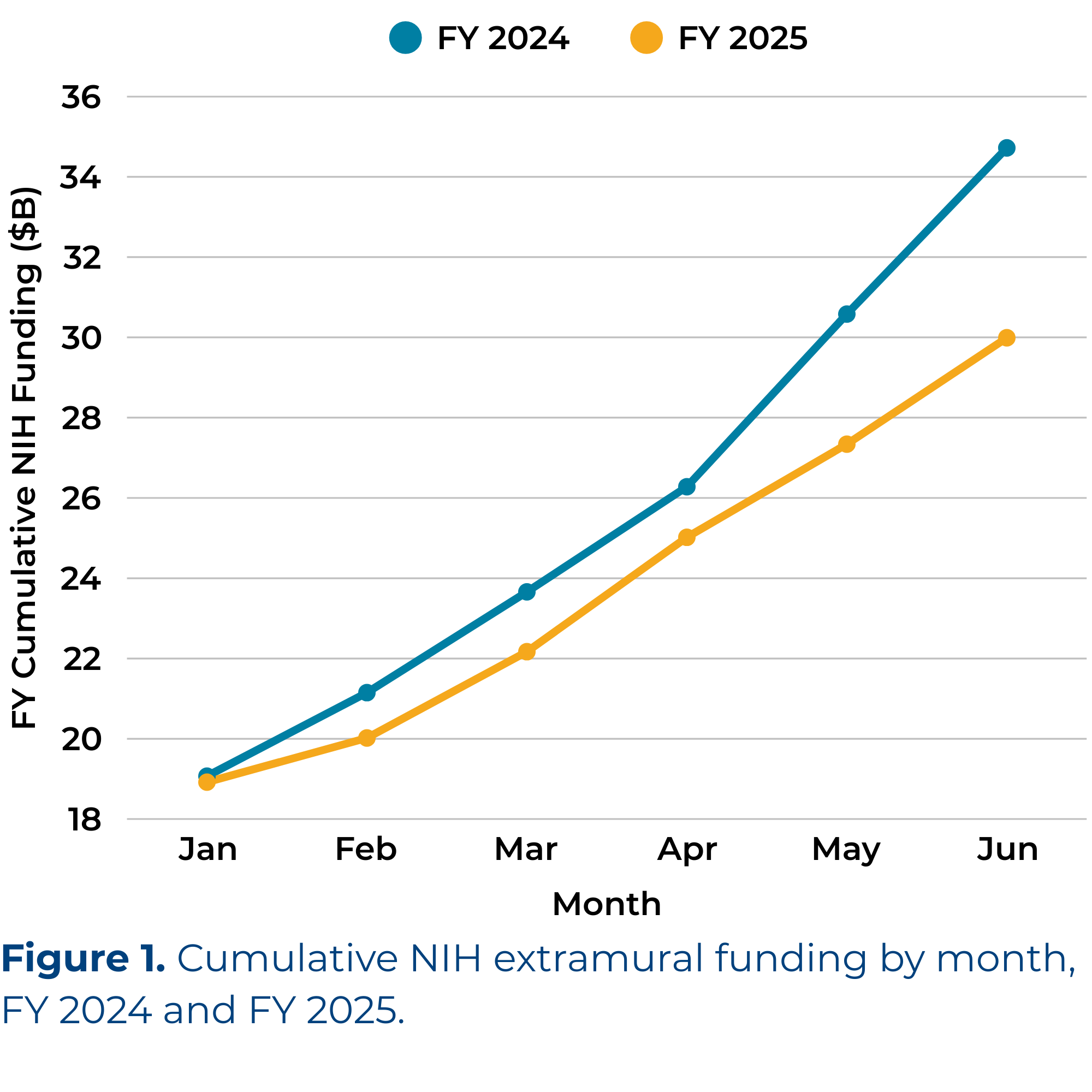Time is running out
The executive branch is legally required to award all funds that Congress has appropriated to the National Institutes of Health (NIH) by Sept. 30. But as that deadline approaches, billions of dollars remain unavailable for research.
A new AAMC analysis shows that the NIH committed to U.S. institutions nearly $5 billion less in research grants in the past year than in the year before, the result of disruptions and slowdowns in the processes for awarding federal grants.

An AAMC analysis found that NIH grant funding remained comparable to previous academic years through December 2024. From January 2025 onward, however, the gap in total NIH funding has steadily widened, resulting in far less funding in 2025 than there was for the same months in the previous year.
This growing gap in grant funding begs the question: Why leave money for medical research unused when people are still waiting for cures? For every patient or family who will receive a devastating diagnosis today, there is simply no excuse for not conducting potentially life-saving research that has been rigorously vetted with funds that Congress has already allocated for that purpose. Every dollar that the NIH fails to make available is fundamental research not conducted, next-generation scientists not trained, and scientific progress stalled.
